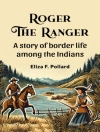In ‘Wells Brothers: The Young Cattle Kings, ‘ Andy Adams immerses readers in the rugged and tumultuous world of cattle ranching during the late 19th century American West. With a keen eye for detail, Adams employs a straightforward yet evocative narrative style that captures the vibrancy and grit of the frontier life. The novel intricately weaves themes of brotherhood, ambition, and the complexities of the cattle industry, painting a vivid picture of the challenges and triumphs faced by young ranchers against the backdrop of westward expansion and economic change. Andy Adams, an experienced cattleman himself, draws on his firsthand knowledge of the ranching life to infuse the tale with authenticity. His deep understanding of the ranching community and its struggles lends credence to the characters’ experiences, making them resonate with both historical depth and emotional truth. Adams’s own journey through the cattle industry informs the narrative’s rich thematic underpinnings, reflecting a deep appreciation for both the landscape and the spirit of the era. This novel is highly recommended for readers interested in American history, Western literature, or simply a riveting tale of perseverance and camaraderie. Through the Wells brothers’ journey, Adams offers a timeless exploration of youthful ambition and the relentless pursuit of one’s dreams in a harsh yet beautiful land.
About the author
Andy Adams (1859–1935) was an American writer of western fiction, whose authentic narratives were significantly informed by his own experiences as a cowboy. Born in Indiana, Adams spent his early years before moving to Texas, where he worked a decade driving cattle on the long trail. His rich background in ranch life and cattle herding imbued his writing with realism and a vivid sense of place, which differentiated his work from more romanticized portrayals of the West.
‘Wells Brothers: The Young Cattle Kings, ‘ showcases Adams’s narrative prowess, offering a coming-of-age story set against the backdrop of ranching life. The book absorbs its readers into the trials and tribulations faced by the titular Wells brothers as they strive to establish their place in the cattle industry. Adams’s storytelling could be characterized by its straightforward style, avoiding the exaggeration often found in cowboy fiction of his time. Instead, he opted for an honest depiction of the challenges and adjustments young ranchers would have faced, highlighting the themes of resilience and perseverance. His work not only provides entertainment but also serves as a historical testament to the American frontier’s realities during the late 19th and early 20th centuries.












